[Learning Points]
- Hypertension is a common chronic disease among the elderly. Two-thirds of the people over the age 65 have a higher chance to get hypertension.
- Avoid smoking or drinking coffee, tea or other beverages containing high amount of caffeine 30 minutes before measuring blood pressure.
I. Introduction
ypertension is a common chronic disease among the elderly. Two-thirds of the people over the age 65 have a higher chance to get hypertension. Uncontrolled hypertension will cause complications. Hypertension can lead to many clinical events of the cardiovascular system, for example, cardiac hypertrophy, cardiomyopathy, heart failure, myocardial infarction, stroke, coronary artery disease, aortic dissection and kidney injury, resulting in permanent organ damage or even death. Therefore, it is quite important for early diagnosis and adequate management of hypertension.
II. Symptoms of Hypertension
Hypertension does not always come with symptoms. Symptomatic patients might suffer from headache, dizziness, fatigue, flushing, sweating, palpitations, or even blurred vision, etc.
III. Measurement of Blood Pressure
- Avoid smoking or drinking coffee, tea or other beverages containing high amount of caffeine 30 minutes before measuring blood pressure.
- Sit calmly and put your elbows on the desk. Do not wear overly tight clothes . The blood pressure cuff and your heart should be at the same height.
- Rest for 5 minutes before taking blood pressure. It can be measured two times or even more at home or in clinics.
- f home blood pressure is over 135/85 mmHg in average, hypertension diagnosis could be considered.
IV. The Classification of Hypertension
Hypertension is categorized into prehypertension, stage 1, stage 2 and stage 3 according to severity; the higher the stage, the greater the chance of relevant complications (Table I).
Table I: Categories of blood pressure in adults
|
Staging |
Systolic BP(mmHg) |
Diastolic BP(mmHg) |
|
Normal |
<120 |
<80 |
|
Prehypertension |
120-129 |
<80 |
|
Stage 1 |
130-139 |
80-90 |
|
Stage 2 |
>140 |
>90 |
|
Stage 3 |
≧180 |
≧110 |
V. The Benefits of Treating Hypertension
The goal of hypertension treatment is to prevent cardiovascular diseases caused by high blood pressure. In average, control of hypertension can reduce the risk of stroke by 35-40%, myocardial infarction by 20-25% and heart failure by 50%.
VI. The blood pressure target of treatment
In order to reduce the incidence of cardiovascular disease, the systolic blood pressure should be controlled around 120-129 mmHg, diastolic blood pressure 70-79 mmHg, older than 65 years old, systolic blood pressure is controlled around 130-139 mmHg.
|
Age |
Systolic blood pressure (mmHg) |
Diastolic blood pressure (mmHg) |
||||
|
Hypertension |
with DM |
With renal disease |
With coronary artery disease |
With stroke |
||
|
18-65 yrs |
<120~130 |
<120~130 |
<130~140 |
<120~130 |
<120~130 |
70 ~ 79 |
|
65-79 yrs |
130 ~139 |
130 ~139 |
130 ~139 |
130 ~139 |
130 ~139 |
70 ~ 79 |
|
≧80 yrs |
130 ~139 |
130 ~139 |
130 ~139 |
130 ~139 |
130 ~139 |
70 ~ 79 |
|
systolic blood pressure (mmHg) |
70 ~ 79 |
70 ~ 79 |
70 ~ 79 |
70 ~ 79 |
70 ~ 79 |
|
VII. The Treatment of Hypertension
Treatment of hypertension should include life style modification and drug therapy.
- Lifestyle modification
The key point to prevent high blood pressure is to adopt a healthy lifestyle. Lifestyle modification can reduce blood pressure, enhance the effect of antihypertensive drugs, and reduce the number and doses of antihypertensive drugs.
Lifestyle modification:
- Body weight reducetion: overweight or obese patients should lost body weight (ideal body mass index 20.0 to 25.0). A weight reduction of 10 kg reduce systolic blood pressure by 5-20 mmHg. The waistline of male not over 90cm and female not over 80cm.
- Body Mass Index (BMI): weight (kg) / height (m) 2
- Diet:Ingest more fruit, vegetables, low-fat dairy products and reduced in saturated fat. Eat more fruits, vegetables and low-fat foods, such as brown rice, coix seed, walnut kernel, bitter gourd, yam, cabbage, asparagus, onion black fungus, etc.; food rich in potassium ions foods such as: diced willows, oranges, raisins, bananas, potatoes, spinach, etc.; food rich in calcium ions such as low-fat milk, soybeans, black beans, tofu, amaranth, spinach, cloves, etc., the systolic blood pressure can be reduced by 2~8mmHg.
- Salt-restricted diet: for hypertensive patient, daily salt intake should be less than 2-4grams, reducing systolic blood pressure 8-14mmHg.
- Regular exercise: regular aerobic exercise, such as: 90-150 minutes per week, with a maximum heart rate of 65-75%, can reduce systolic blood pressure by 5-8mmHg.
- Adequate alcohol consumption: For men, a daily limit is less than 30 mL of alcohol (approximately equal to 720 mL of beer, 300 mL of wine or 60 mL of whiskey), for women less than 15 mL daily; it can reduce systolic blood pressure by 2-4 mmHg.
- Control blood glucose (before meal sugar 70-110mg/dl、after meal for 2 hours under 140mg/dl). Smoking would promote atherosclerosis and lead to hypertension, thus smoking cessation is good for blood pressure control.
2. Drug therapy
The following five classes of antihypertensive drugs can lower blood pressure and prevent the complications of uncontrolled hypertension.
- Thiazide diuretics, such as trichlormethiazide.
- Beta-blockers, such as bisoprolol.
- Calcium channel blockers, such as amlodipine.
- Angiotensin receptor blocking agents, such as losartan.
- Angiotensin converting enzyme inhibitors,such as acertil.
|
Types of medicines |
Name |
Figure of medicines |
Precautions and side effect |
|
Thiazide |
Spironolactone |
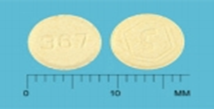 |
Increased urine output, thirst, stomach upset, dizziness,etc. |
|
Dithiazide |
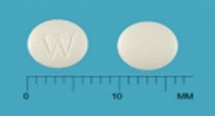 |
||
|
Metolazone |
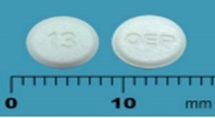 |
||
|
ß-blocker |
Atenolol |
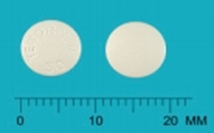 |
Dizziness or lightheadeness, drowsiness, sleep disturbance, lethargy, ect. |
|
|
Concor |
 |
|
|
Carvedilol |
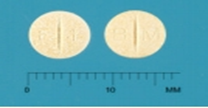 |
||
|
Propranolol |
 |
||
|
Calcium-channel blocker |
Norvasc |
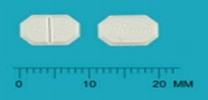 |
Headache, flushing, edema of extremities, dizziness; do not take with grapefruit. |
|
Adalat oros |
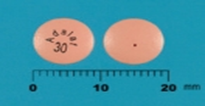 |
||
|
Diltiazem |
 |
||
|
Herbesser |
 |
||
|
Verapamil SR |
 |
||
|
ARB |
Valsartan |
 |
Dry cough, change in taste, stuffy nose etc. |
|
Olmesartan |
 |
||
|
Edarbi |
 |
||
|
Hyzaar |
 |
||
|
Cozaar |
 |
||
|
Enalapril |
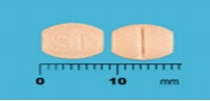 |
Dry cough, diarrhea, headache, change in taste, nausea, burnout etc. |
|
|
Captopril |
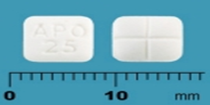 |
||
|
Acertil |
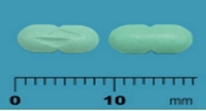 |
||
|
Noprisil |
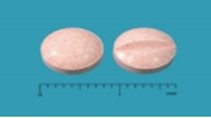 |
||
|
Mixed type(combine different mechanism) |
Exforge |
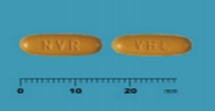 |
Edema, respiratory infection, back pain, hyperkalemia, dizziness, headache, renal insufficiency, postural hypotension. |
|
Sevikar HCT |
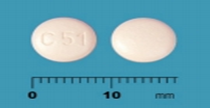 |
||
|
Sevikar |
 |
||
|
Twynsta |
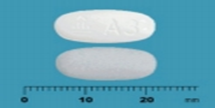 |
||
|
Caduet |
 |
||
|
Amtrel |
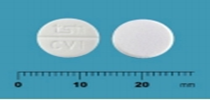 |
||
|
Exnortan |
 |
VIII. Conclusion
Treating hypertension could prevent cardiovascular diseases, such as coronary atherosclerosis, cerebral vascular accident, and kidney disease, and reduce the associated mortality. Hypertensive patients should change their life styles and take medications regularly. Doctor will rely on diffierent condition to use appropriate medication to acquire greastest treatment.
IX. References
- 臺中榮民總醫院(2022)•臺中榮總藥品手冊查詢系統• https://www.vghtc.gov.tw:8443/pharmacyHandbook
- Bakris, G., Ali, W., & Parati, G. (2019). ACC/AHA versus ESC/ESH on hypertension guidelines: JACC guideline comparison. Journal of the American College of Cardiology, 73(23), 3018-3026. https://doi.org/10.1016/j.jacc.2019.03.507
- Flack, J. M., & Adekola, B. (2020). Blood pressure and the new ACC/AHA hypertension guidelines. Trends in Cardiovascular Medicine, 30(3), 160-164. https://doi.org/10.1016/j.tcm.2019.05.003
- Wang, T. D., Chiang, C. E., Chao, T. H., Cheng, H. M., Wu, Y. W., Wu, Y. J., Lin, Y. H., Chen, M. Y., Ueng, K. C., Chang, W. T., Lee, Y. H., Wang, Y. C., Chu, P. H., Chao, T. F., Kao, H. L., Hou, C. J., & Lin, T. H. (2022). 2022 Guidelines of the Taiwan society of cardiology and the Taiwan hypertension society for the management of hypertension. Acta Cardiologica Sinica, 38(3), 225–325. https://doi.org/10.6515/ACS.202205_38(3).20220321A .
- 位置
-
- 資料夾名稱
- English
- 上傳者
- 王勝昌
- 單位
- 中榮護理衛教
- 英文名稱
- Hypertension
- 分類
- 三高
- 科別
- 心臟內科
- 癌症照護
- 否
- 建立
- 2024-02-24 15:08:42
- 制訂日期
- 2015-11-16
- 最近修訂
- 2024-03-19 11:52:00